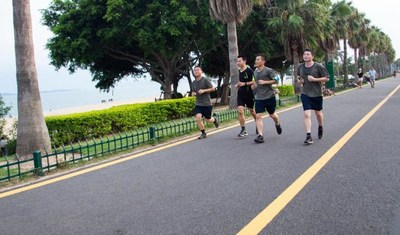BEIJING, March 9, 2021 /PRNewswire/ -- A report from Beijing Review written by Li Xiaoyang:

China will raise the percentage of permanent urban residents to 65 percent of the population by 2025 from some 60 percent in 2020.
The government work report delivered at this year's session of the National People's Congress (NPC), China's top legislature, on March 5 said China will move faster to grant permanent urban residency to people who move to cities from rural areas.
This population flow from rural to urban areas, where the industries are more developed, is accelerating economic progress, Yao Yang, Dean of the National School of Development at Peking University, told Beijing Review, adding that over the past decades, 14 percent of the economic growth can be attributed to urbanization.
The National Development and Reform Commission (NDRC) said earlier this year that the target set in 2014 of turning 100 million people from rural areas into urban residents by 2020 had been accomplished.
Cities with a population of less than 3 million had removed barriers for rural residents to apply for urban household registration, which gives them greater access to local public services. Most of the bigger ones also eased restrictions for incoming groups including migrant workers with stable jobs and college students from rural areas.
Many city clusters have seen mushrooming development and population. According to Hu Zucai, deputy head of the NDRC, the urbanization drive has created 19 city clusters, where over 75 percent of the entire urban population live. These clusters contribute more than 80 percent of the GDP.
The 14th Five-Year Plan (2021-25) and long-range objectives through 2035 to be adopted at this year's NPC session will outline new goals for urban growth.
According to the proposed document, the growth of major metropolitan areas and city clusters, especially the Chengdu-Chongqing economic circle in southwest China, will be spurred on. Regional development gaps will be narrowed by providing support for the northeastern, central and western regions and improving the transfer payment system, which ensures transfer of funds from the Central Government to local governments. Major cities and city clusters will play a greater role in empowering their neighboring regions.
The plan also envisions addressing pollution, better designing urban spaces, protecting historical heritage, and renovating old communities. Water and sewage systems in urban areas will be improved. Risk control will be enhanced, the housing market reined in, and the urban household registration system eased further.
However, Hu said problems including the relatively low quality of life of rural residents settling down in cities, uneven regional development, and insufficient urban governance capacity call for more targeted efforts.
To make cities real home to rural migrants, public education and housing have to be improved. The group should also be given skills training for industries with a high labor demand, such as smart manufacturing and household services, to improve their income and purchasing power.
"China needs to build more cities with international competitiveness. Its development has relied on a few major cities for a long time," Yin Zhi, a researcher with the Institute for China Sustainable Urbanization, Tsinghua University, told Beijing Review. "It led to traffic congestion, high housing prices and pollution in large cities, leaving many small and medium-sized cities insufficiently developed."
Hu's proposal therefore is to develop county-level economies and improve inter-city transportation.The growth of smart cities is envisioned through the use of new technologies including 5G and artificial intelligence, which will improve physical infrastructure and the digital platforms for urban management.
In the next phase, the government needs to encourage two-way personnel flow between urban and rural areas. Due to the employment pressure in cities, some rural residents may choose to return to their hometowns. The working skills they have acquired can make them key contributors to local development.
"As new urbanization advances, more personnel, funds and other resources will flow to rural areas, which will improve resource allocation across the country," Yin said.
Photo - https://mma.prnewswire.com/media/1452517/People_jog_Xiamen_Fujian_Province_southeast_China__PHOTO_BY_WANG.jpg

